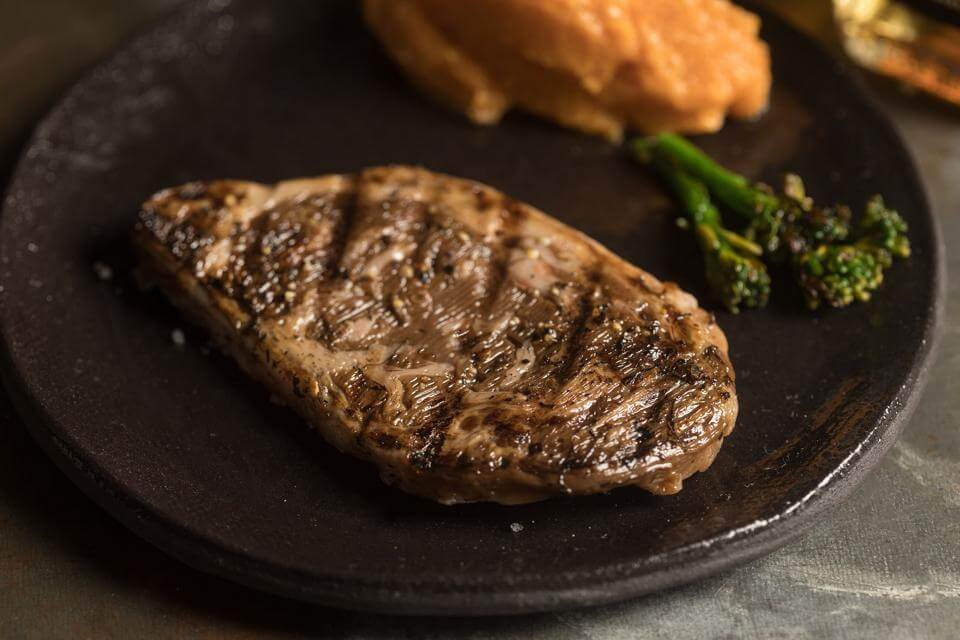(Photo: Aleph Farms)
The world’s first 3D bioprinted and cultivated ribeye steak was made without genetic engineering. Created by Aleph Farms Ltd. and the Faculty of Biomedical Engineering at the Technion – Israel Institute of Technology, the steak also did not require the slaughter of any animals. Didier Toubia, co-founder and CEO of Aleph Farms, shared more in an interview.
3D Bioprinting and Real Cow Cells
3D bioprinting uses cells instead of ink or plastic to make things. The cultivated ribeye from Aleph Farms has many similarities to a regular steak, such as real muscles and fat. To create the meat, researchers used 3D bioprinting and real cow cells. The technology allows them to print living cells that can grow and interact in a vascular-like system helping nutrients move and resembling real steak.
“Our 3D bioprinting is an approach where we assemble a structured piece of meat bottom up outside of the animal from its natural building blocks, which are different types of living animal cells. Our cells are natural, non-GMO and non-immortalized. The 3D bioprinted tissue is then incubated where the cells develop and interact in a similar manner as in nature, granting the tissue the texture and qualities of a steak,” Toubia said.
Aleph Farms’ process uses a fraction of the resources required for raising an entire animal for meat, without antibiotics and without the use of fetal bovine serum (FBS). Part of the cost savings comes from using natural pluripotent cells that are cultivated in large quantities. Pluripotent cells, such as stem cells, can be used to make all of the other cell types in an organism.
Read the rest here: https://www.forbes.com/sites/lanabandoim/2021/02/12/worlds-first-3d-bioprinted-and-cultivated-ribeye-steak-is-revealed/?sh=dfba99147810
